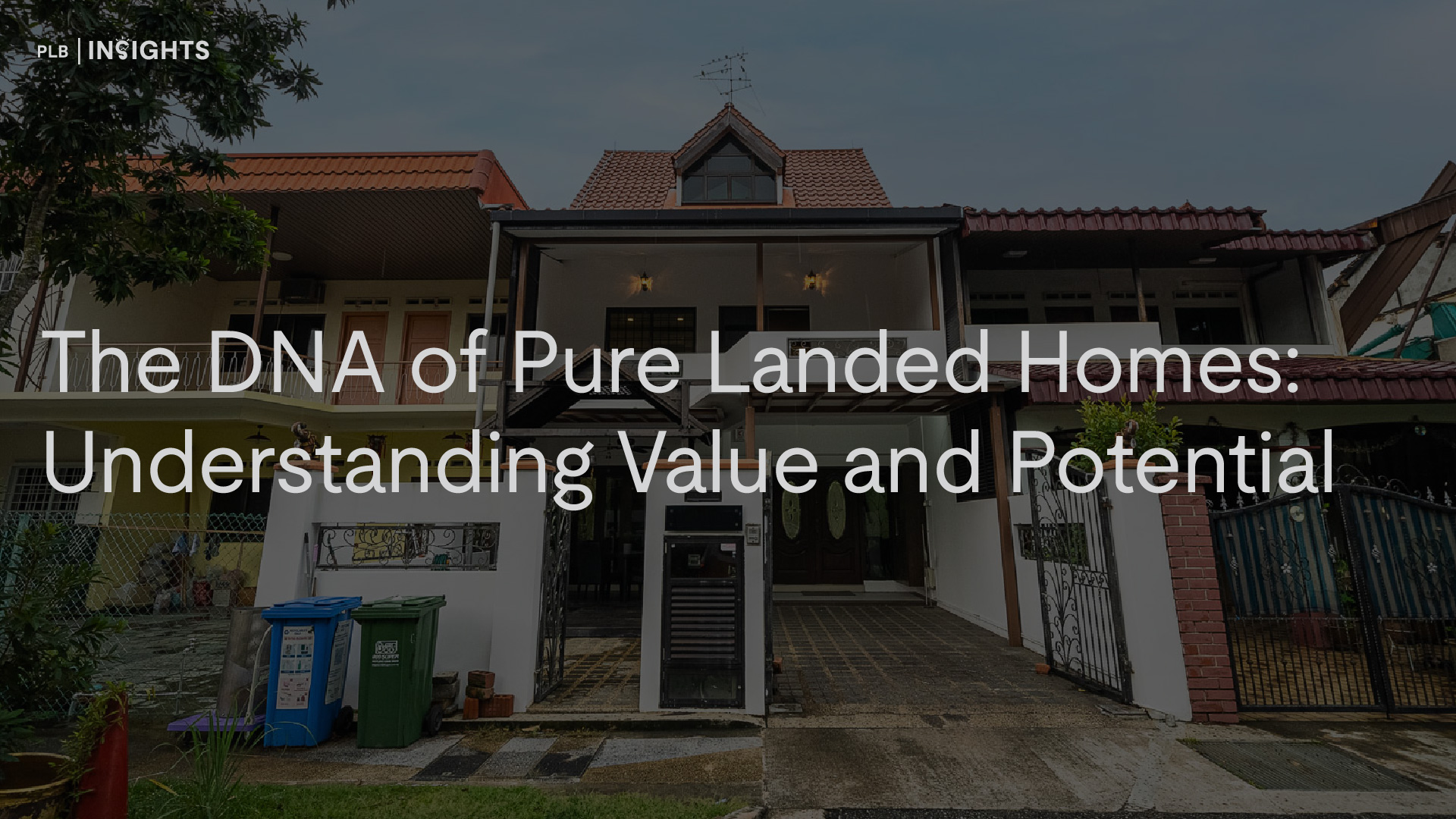
Property is one of the most popular forms of investment in Singapore. Not only is it a home for families to return to, but it is also a great store of value. It has helped countless Singaporeans grow their personal wealth and aid them in their journey of financial independence. The first home often strikes as an emotional achievement–a milestone for the journey of any Singaporean adult.
Moving forward into financial maturity, many individuals and families decide to buy investment properties. Some use a decoupling strategy, while others use a concentrated investment into Singaporean real estate. Each of them has its purpose. Regardless of what strategy you pick, it is important to understand the basic fundamentals of what sustains an investment property.
Rent.
Rental demand is a key factor when we look at the sustainability of real estate growth. To the individual, it helps to foot the mortgage for the investment property. To the market, it holds up price levels and tells us if the current market is able to satisfy people’s need for housing. Rent is a cornerstone of property investment management.
In this article, we focus on the Rental Demand component of PLB’s MOAT Analysis. We cover the importance of rental demand in detail, followed by how it is measured, and simple comparisons to demonstrate Rental Demand within the MOAT Analysis tool.
The Importance of Rental Demand
Before we dive into the details of rental demand, let’s take a big picture approach to the entire property market. In the private Singaporean real estate market, residential properties are either used for ownstay or for investment purposes. For ownstay, a loan is typically taken from the bank and the mortgage is usually covered by one’s income. For investment properties on the other hand, a loan is also taken from the bank, but it is usually the tenant that pays a rent which is used by owners to subsidise or foot the mortgage.
Rental demand is important from this point of view. It helps to sustain property investments in the real estate market. Imagine a Singapore where there is not a soul to rent a home from you. How are you going to support the loan on the second property? (especially if the first one is not entirely paid up yet) You must either have a ridiculously high income, or live on bare minimum expenses. Tenants in the real estate market are a key part of the ecosystem. They help make property investments in the market sustainable.


Pushing this idea further, rental prices also support the price growth of residential properties. In our article on housing bubbles, we describe how income and rent are two key tenets of supporting growth in the housing market. If rent or income does not increase, it would mean that the growing housing prices might not be well supported. It might be due to speculative demand, where buyers are overextending themselves to purchase properties on the market. In these scenarios, homeowners must either dig into their savings to continue to afford the property, or they would have to reduce their other expenses. In any case, a housing market without the support of rent and income growth, will find it difficult to appreciate over time.
Moreover, not all properties or locations are made equal. Rental demand fluctuates across Singapore. However, rental demand (volume) might not always correlate perfectly with price. For instance, places near the MRT might have a higher price and property buyers may demand it more. But will tenants have the same inclination to want to rent these properties just as much as buyers want to buy? This is a mildly complex but important question. In other words, where is the sweet spot for rental demand? Is this sweet spot the same one for buyers as it is for tenants?
That’s where the MOAT Analysis comes in.
The MOAT Analysis gives us a comprehensive comparison of multiple properties on different factors. At a glance, we are able to swiftly compare how the properties are different. What they excel at and what they don’t. It helps us identify if the property is attractive to tenants and future owners, through a range of different factors.
With the MOAT Analysis, you’ll be able to gauge the Rental Demand of your (future) investment property and compare how it fares with other potential candidates. After all, it is probably going to be one of your largest investments. There are deep benefits to be reaped by making decisions after the appropriate due diligence is done.
How do we measure Rental Demand?
Rental Demand is measured by observing recent rental transactions as well as the number of units in the property. By measuring rental demand this way, we get to look at it in a standardised way. Such that the size of developments does not interfere with our ability to identify rental demand. This is an important detail. Many aspects of the property can correlate to the rental demand of the property and it may confound what we are trying to measure. In order to create a good measure for rental demand, one must try to sieve out any other related factors that will interfere with the measurement.
For the rental demand, we select the timeframe of 1 year to consider the rental transactions for the property. This is because rental contracts are typically reviewed annually. While some tenants might prefer long term rental contracts, it would be better to review it annually to keep a more nimble measure of Rental Demand. By choosing this timeframe, we have a more sensitive instrument and keep more up-to-date on the rental situation on the ground.
Another reason why this timeframe is important is because of its relationship with rental price. Technically, what we are measuring is rental volume in relation to the total number of units in the property. Even though we are not measuring rental price or yield, by selecting a shorter and more recent timeframe, we account for the updated rental volume despite the most recent prices (which should be higher than before).
In this sense, the measure of rental volume is kept robust and accounts for differences in the property and over time. This includes the size of the development and changes in the price trends of the property due to other factors not captured by the transaction volume itself.
Rental Demand in the MOAT Analysis
With the fundamentals of Rental Demand explained, let us take a look at how it works in the MOAT Analysis. For comparison purposes, we look at three condominiums for varying performance on the Rental Demand scale. We will compare Livia, Chestervale, and 1 Canberra. In the simple comparison, we try to answer the questions we raised earlier. This is not a definitive answer due to the small sample size of three. But what we aim to do is simply demonstrate how the Rental Demand factor ties in with all the other aspects of the MOAT Analysis.


The first property that we will be analysing is Livia. It is a 99-year leasehold condominium with the tenure starting in 2008 and with it being completed in 2011. Livia is located in District 18, Pasir Ris and has a total of 724 units. This is a moderately large condominium by unit size. This OCR condominium garnered the attention of plenty of HDB upgraders in its time. Even now, the number of homeowners from that demographic sits at approximately 61.9% of the total number of homeowners.
Livia is not located in the most convenient location but it still performs well overall in the MOAT Analysis. It scores a 4 for Volume Effect, Bala’s Curve Effect, and Landsize Density Effect. It has a score of 5 for Exit Audience, Quantum Effect, and Rental Demand. From the MOAT score tabulation, we can roughly tell what customer audience this condominium appeals to.


HDB upgraders form the mass of the market. The moderately high volume, remaining lease, and size of the project show that there is still a decent amount of value remaining in the property for the subsequent homeowner even though it is a leasehold property. A higher transaction volume and property size make for an easier valuation exercise for financial institutions that provide loans.
Livia seems to have hit a sweet spot for both rental pricing and property investing. From just a glance in the MOAT Analysis, we can see that it is a decent mid-range entry for an investment property and is still decent for ownstay purposes. This makes the property versatile in the event of a change of plans from rental to own stay or vice versa.
Next, we shall compare it with Chestervale (MOAT Chart below). Chestervale is a 99-year leasehold Executive Condominium. Its lease started in 1997 and it was completed in 1999. It is located in District 23, in Bukit Panjang. This is a relatively smaller project with only 396 units available, with an even larger demographic from a HDB upgrader background (70.2%). It also has more Singaporean homeowners than average condominiums (88.2%).


Chestervale performs exceptionally well with a score of 5 on value (Regional Disparity Effect), quantum (Quantum Effect) and exit opportunities (Exit Audience). Its Rental Demand is moderate, sitting at a score of 3. Looking at this specific property, Rental Demand may be linked to the distance from MRT stations. The Bukit Panjang area is serviced by buses and LRTs rather than the primary MRT system. Lesser mobility options may be related to the poorer performance of Rental Demand.
The Rental Demand in Chestervale may also be lower due to the larger-sized unit distribution in this development (which is catered to families). All of the units are sized 1,200 square feet and above. The large apartment size means that individual expatriates, or foreign workers would need to find housemates to rent with. If not the tenants would most likely be families.
Any of the MOAT Analysis components are inevitably linked. As we have explained in the past 2 properties, the MOAT Analysis can paint you the story in a glance. What is the target audience for the property? What are its strengths and weaknesses?


The final property we are looking at is 1 Canberra (MOAT Chart above). 1 Canberra is a 99-year leasehold Executive Condo with its lease starting in 2012. It is located in District 27, Yishun and was completed in 2015 with a total of 665 units. It does well in Quantum Effect and Exit Audience (5 points) and decent in value, volume, and tenure (4 points). However, it has a low Rental Demand score of 1.
A few different reasons could explain the low Rental Demand score. There is a large number of HDBs in the same neighbourhood and some might be closer to the MRT Station. The availability of other (more affordable and convenient) rental options in the vicinity might have led to a significant reduction in Rental Demand for 1 Canberra.
Alternatively, this can also be explained by the homeowners using the property for their own stay rather than as an investment property. Given the fact that 1 Canberra is an EC, and a young one at that, it is not surprising that families living there do not plan to rent or move out anytime soon. Compared to private properties or older ECs, current EC owners may not have the luxury of using the EC as an investment/rental property.
Every property is unique and tells a different story. The multiple aspects of location and market data tell us the comparative advantage of each property. Whether or not the property meets the rental sweet spot for tenants could be due to a plethora of reasons. The MOAT Analysis helps us to gain a better understanding of each property we analyse.
Closing Thoughts
Rental Demand is a key aspect of the property market. It is something that we simply cannot do without. If there is no rental demand in the market, there will be no growth. Investment properties will not be feasible without the existence of a strong rental market. That being said, the rental market has been heating up since the pandemic. Is your property on the right side of the curve?
Do you know if people would want to rent your future investment property? The MOAT Analysis can answer this question at a glance. If you think that this method of analysis is helpful to you in your property journey, please reach out to our experts for an appointment to show you how your prospective investments would fare on the rental demand aspect.









